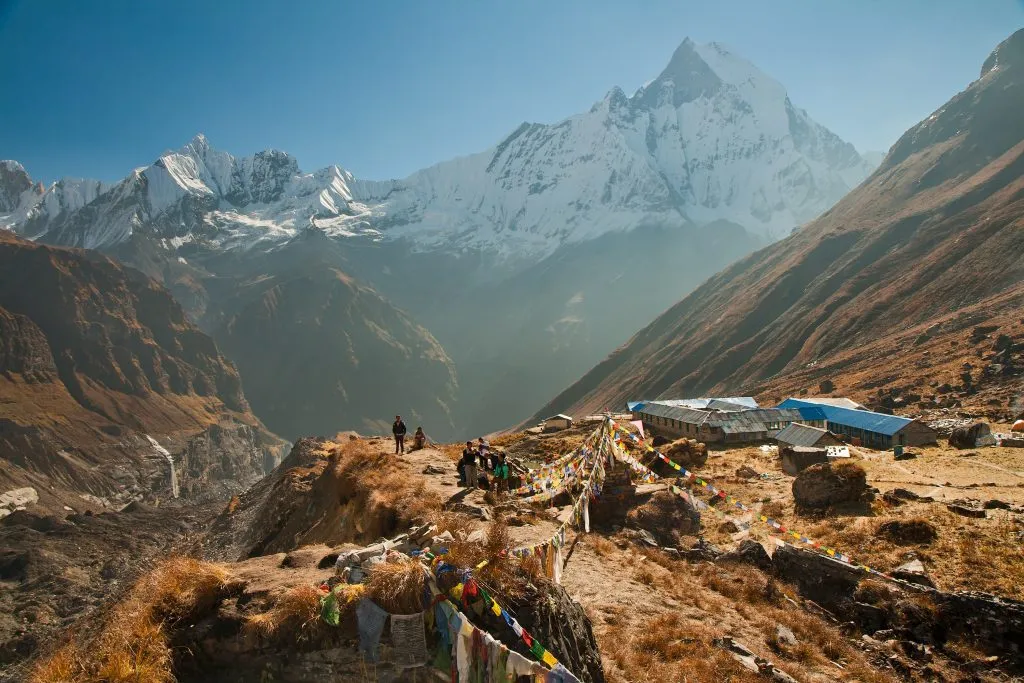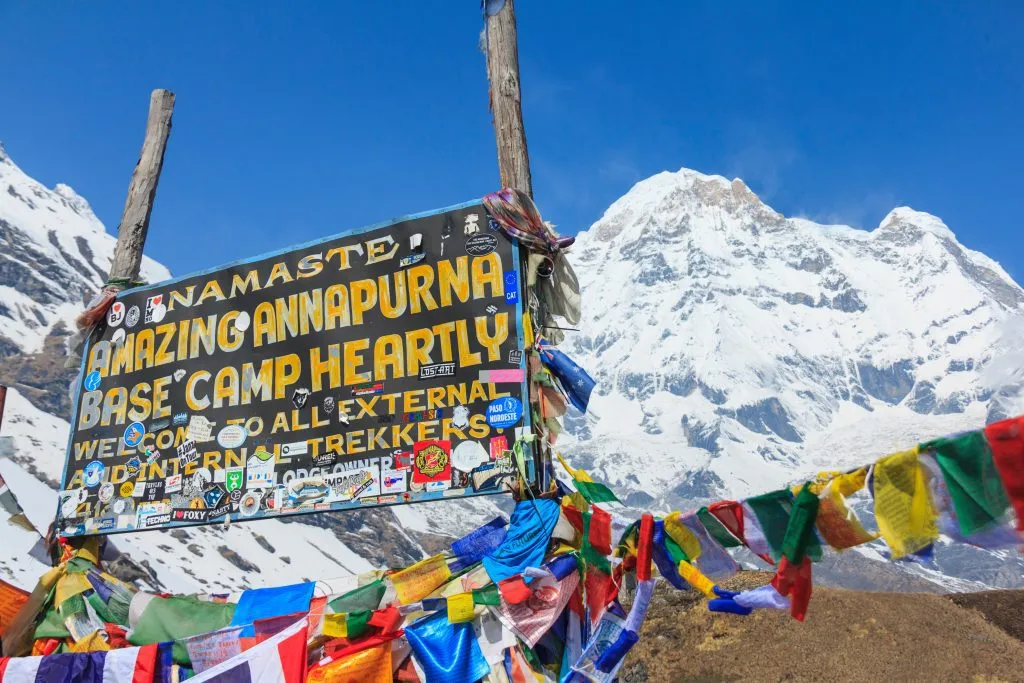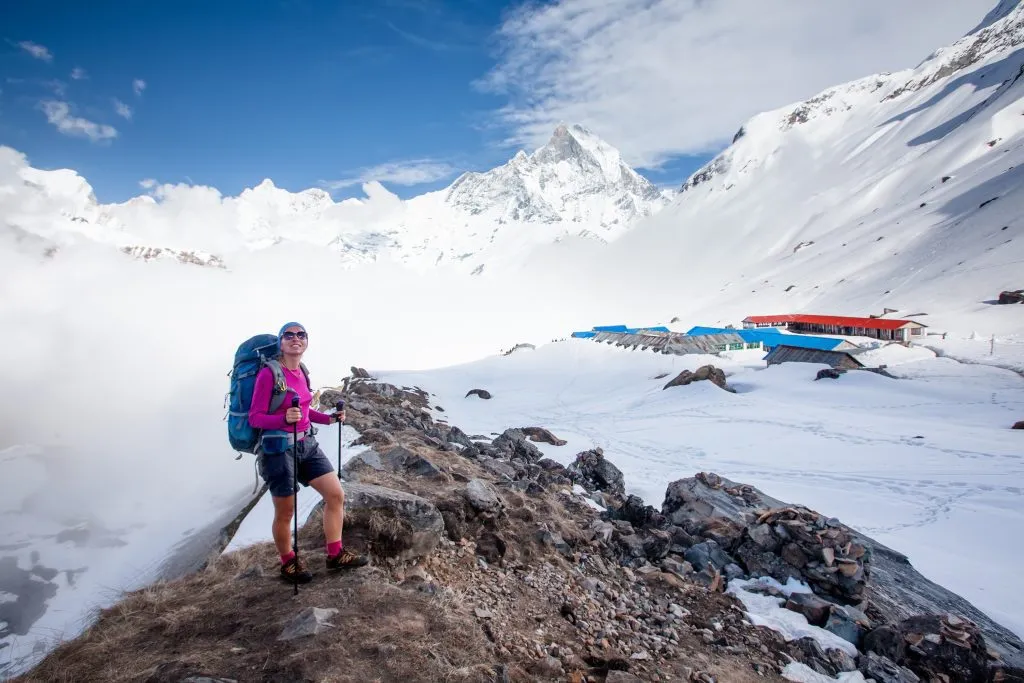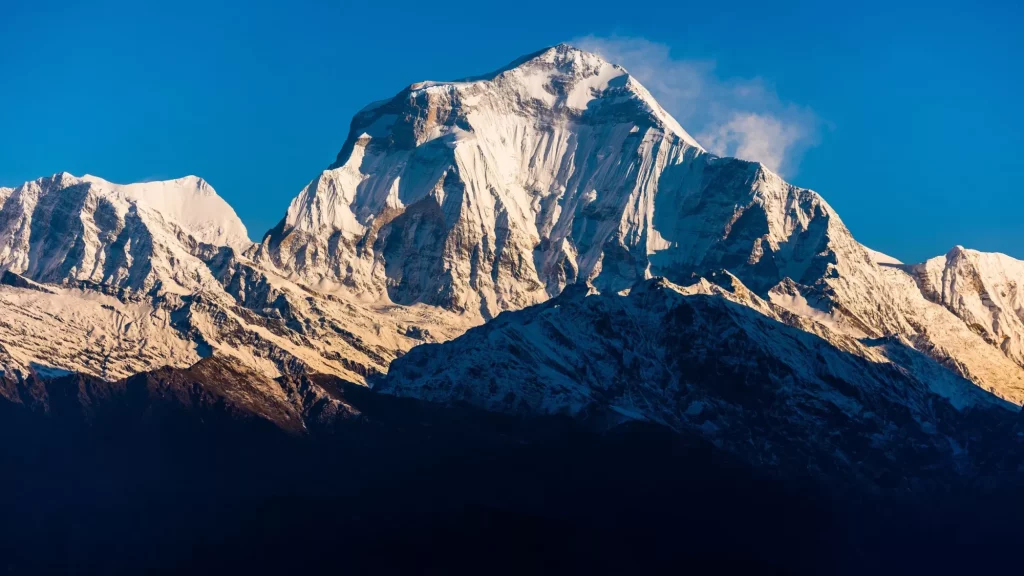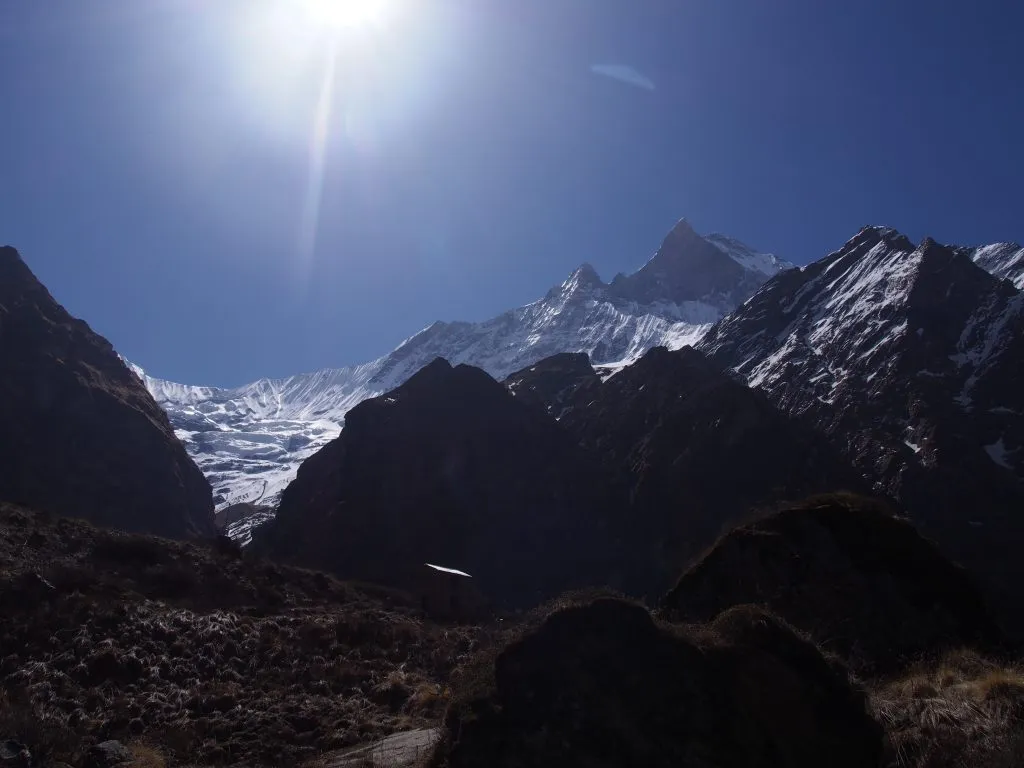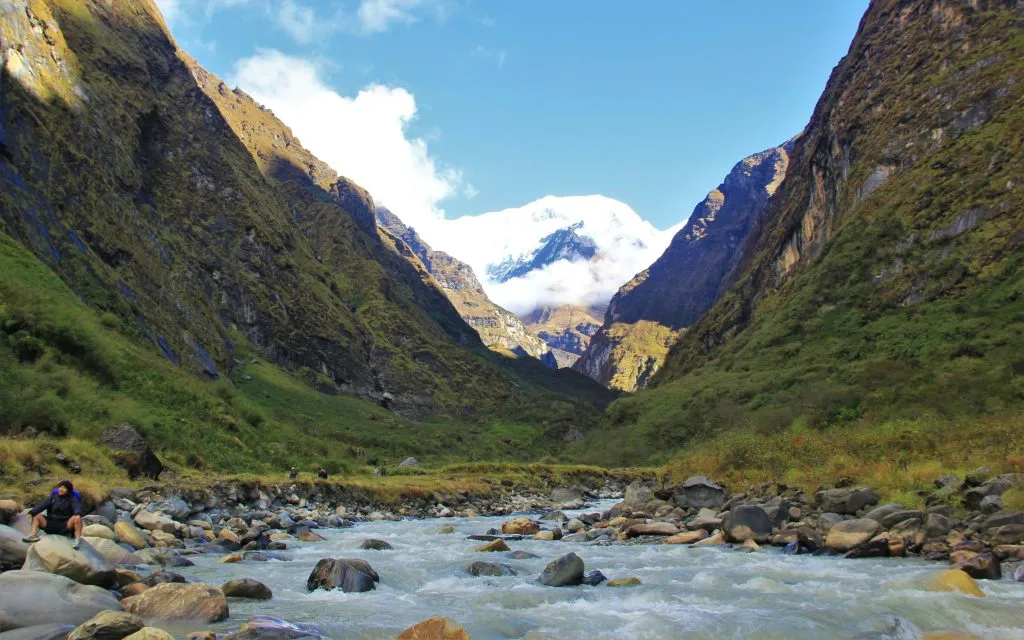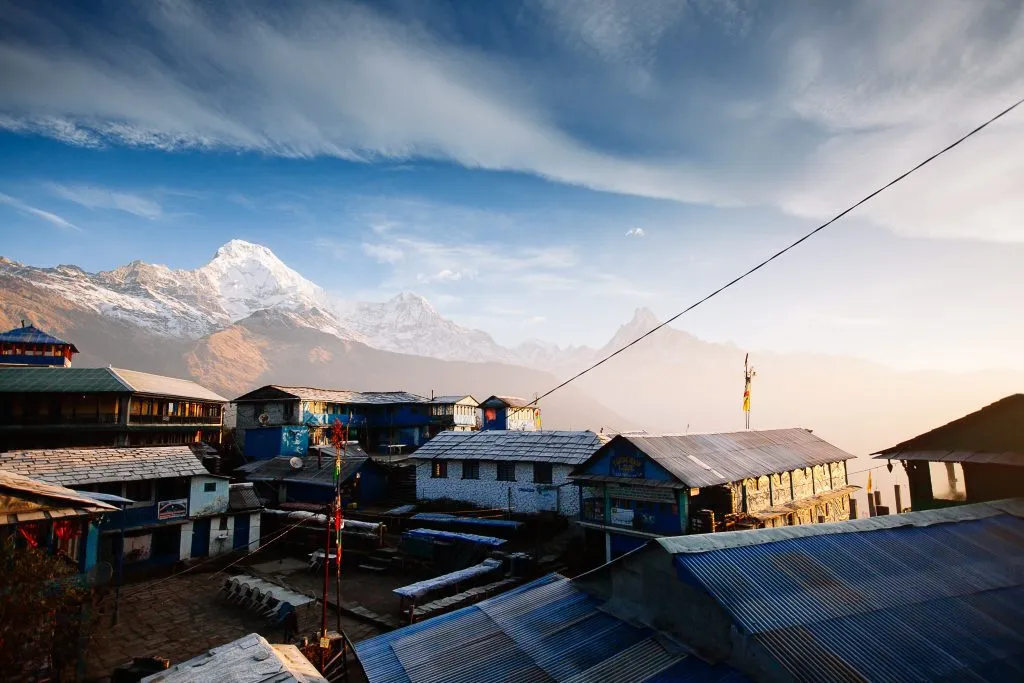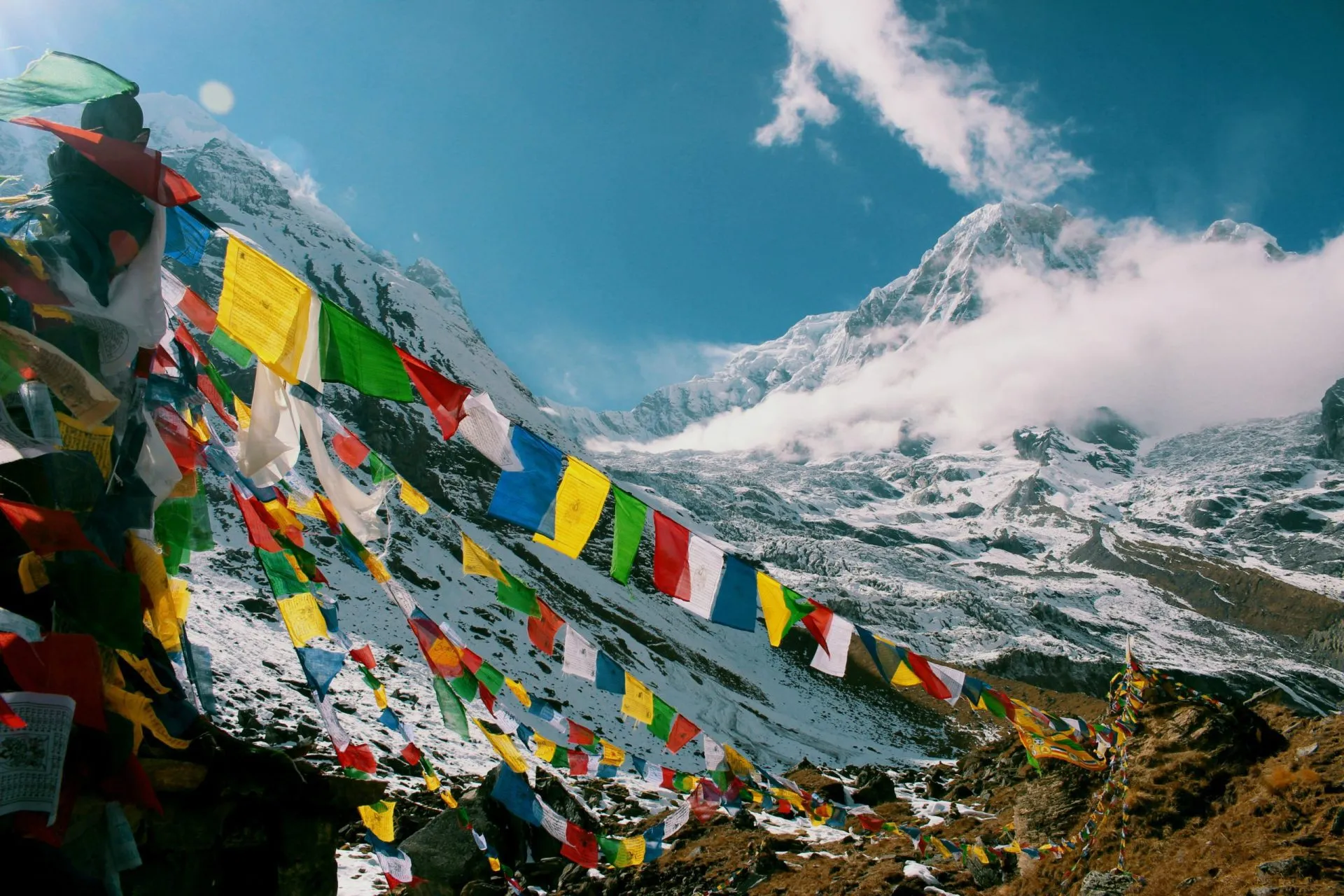
Annapurna Base Camp Trek Itinerary
Trek to the heart of the Annapurna range
Marvel at breathtaking views of iconic peaks like Annapurna I (8,091m / 26,545ft)
Immerse yourself in the rich culture of Gurung and Magar villages
Relax and rejuvenate in the natural hot springs of Jhinu Danda
Stand in awe at the Fishtail Base, close to the sacred Machapuchare peak
Follow the scenic trail along the Modi Khola, surrounded by lush forests and terraced fields
Itinerary
Upon arrival at Tribhuvan International Airport in Kathmandu, you’ll be transferred to your hotel. After settling in, you’ll receive a brief overview of the Annapurna Base Camp Trek and meet your guide. Kathmandu, a city rich in culture and history, offers numerous sightseeing opportunities. Consider exploring the local markets in the evening. You will spend your first night in Kathmandu.
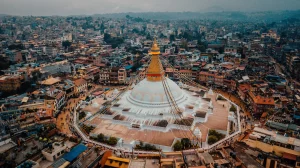
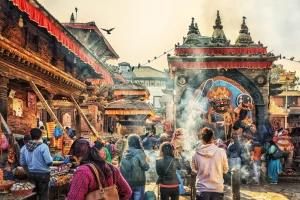
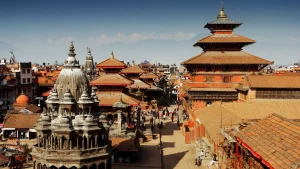
Embark on a scenic drive or opt for a short flight from Kathmandu to the picturesque city of Pokhara. Spend your day exploring Pokhara’s serene lakeside and vibrant streets. Consider visiting the famous Phewa Lake in the evening. Accommodate yourself and make final preparations for the trek.
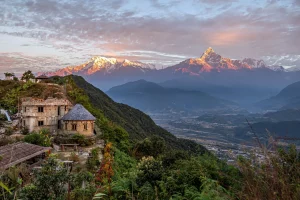
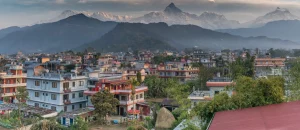
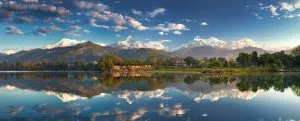
Post breakfast, drive to Banthati. From there, trek to Ghorepani (2,850m), your refuge for the night, navigating uphill sections and stone steps. Ghorepani offers a rustic charm with local teahouses. Upon arrival, enjoy panoramic views of the Annapurna and Dhaulagiri mountain ranges.

Begin with an early morning hike to Poon Hill (3,210m) for a mesmerizing sunrise over the Himalayas. After descending to Ghorepani, continue your trek to Tadapani (2,630m). Tadapani offers cozy lodges with traditional Nepali cuisine. Settle in your accommodation.
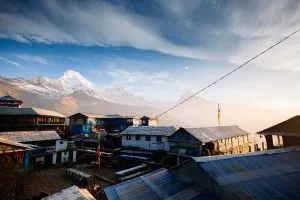

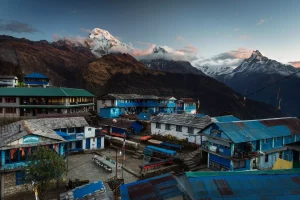
Trek from Tadapani to Chhomrong (2,170m), passing through lush forests and charming Gurung villages. Chhomrong, a gateway to the Annapurna Sanctuary, boasts captivating views of Annapurna South and Hiunchuli. Consider trying local delicacies at the village’s teahouses.
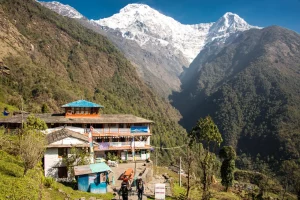
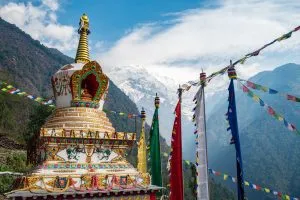
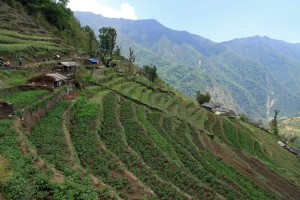
Descend to Chhomrong Khola, then ascend to Sinuwa (2,340m). Continue through rhododendron forests, reaching Bamboo (2,310m), a settlement nestled amidst bamboo groves. The tranquil ambiance of Bamboo is perfect for relaxation. Overnight in Bamboo.

Trek from Bamboo to Deurali (3,230m), journeying through dense forests, waterfalls, and areas prone to avalanches. Deurali offers a serene setting with a backdrop of towering peaks. The Himalayan scenery en route is truly captivating. Overnight in Deurali.


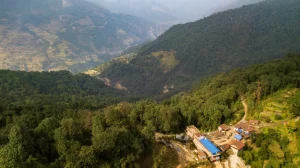
Trek from Deurali to Machhapuchhre Base Camp (3,700m) and onward to Annapurna Base Camp (4,130m). As you ascend, the Annapurna range unfolds in all its glory. The base camp offers an unparalleled 360-degree mountain panorama. Overnight in Annapurna Base Camp.
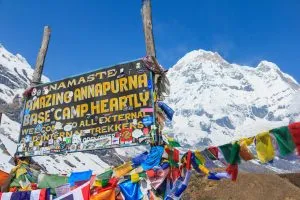
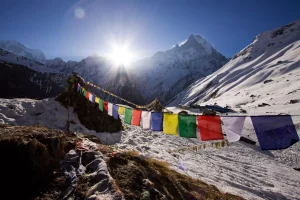
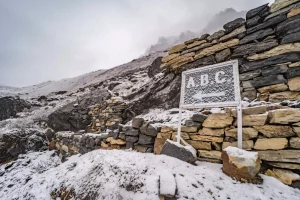
Rise early to savor a sunrise over the mountains from the base camp. Then, descend back to Bamboo, retracing the scenic route. Bamboo’s peaceful environment is ideal for reflecting on the journey so far. Overnight in Bamboo.
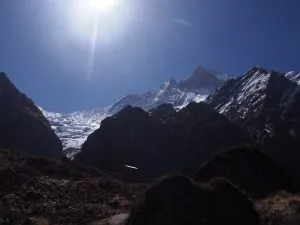
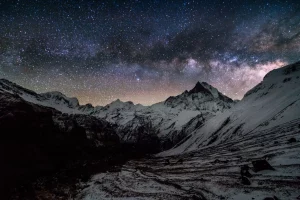
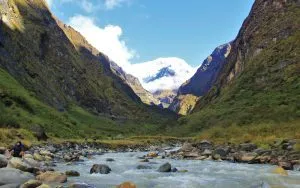
Trek from Bamboo to Jhinu Danda (1,780m). Once there, indulge in a therapeutic hot spring bath, renowned for its healing properties. The springs, set against a mountainous backdrop, offer a rejuvenating experience. Overnight in Jhinu Danda.
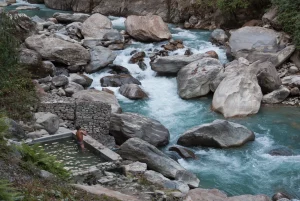
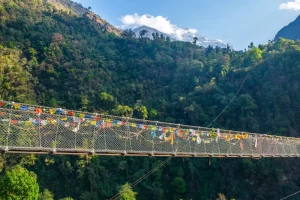
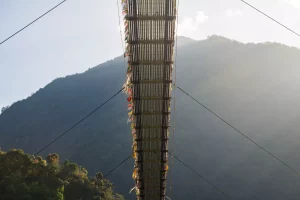
Trek from Jhinu Danda to Simrung, then drive back to Pokhara. Celebrate the trek’s completion and unwind in the serene surroundings of Pokhara. Consider enjoying a boat ride on Phewa Lake or visiting the local eateries for a taste of Pokhara’s cuisine. You will spend your night in Pokhara.

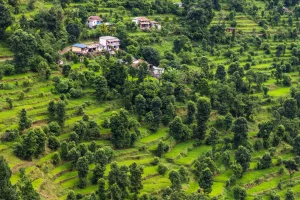
Return to Kathmandu from Pokhara. Dedicate your day to exploring the city’s UNESCO World Heritage Sites, shopping for souvenirs, or visiting cultural landmarks like Swayambhunath and Pashupatinath. Overnight in Kathmandu.
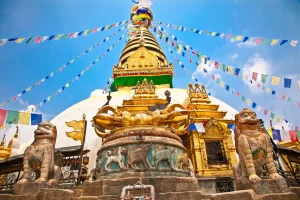

This is the last day of your journey. After breakfast, you will check out of your hotel and be transferred to the airport for your departure flight. Bid farewell to Kathmandu as you depart for your home country or your next adventure.


Pricing
Included in price
Accommodation in Kathmandu and Pokhara is on a BB basis, in three-star hotels with twin/double sharing. During trekking, accommodation is in Tea Houses/Lodges
Ground transportation is provided as per the itinerary
Three meals at Annapurna Base Camp Trekking
A government-licensed, English-speaking guide
The guide’s salary, flight ticket, and insurance
A porter is provided for every two people, carrying up to 20 kg
All required paperwork, including permits and the TIMS card (Trekkers Information Management System)
The Annapurna Conservation Area Permit fee
The guide and porter’s salary, food, drinks, accommodation, transportation, and insurance
Travel and rescue arrangements
All government taxes, VAT, official expenses, and service charges
24/7 call assistance from our office representative
Meals in Kathmandu and Pokhara
Nepal visa fee
Flight fare for Kathmandu-Pokhara-Kathmandu, which is USD212.00 per person
International flight tickets
Any insurance types
Personal expenses such as bar bills, hot water, drinking water, tea/coffee, showers, laundry, Wi-Fi, and charging facilities during the trekking route
Description
The Annapurna Base Camp Trek, often referred to as the ABC trek, is a sought-after journey nestled in the heart of Nepal’s Annapurna region. This trek is a blend of diverse terrains, from verdant forests to quaint villages, leading trekkers to the iconic Annapurna Base Camp.
At an elevation of 4,130 meters, the base camp unveils panoramic vistas of majestic peaks, with Annapurna I, standing tall at 8,091 meters, being a prominent highlight.
While many embark on the ABC trek from Nayapul, our unique route commences from Banthati, adapting to the evolving landscape due to road development. This path leads you through enchanting places such as Ghorepani and Chhomrong, gateways to the vibrant culture and traditions of the Gurung and Magar communities. Their warm hospitality and age-old customs enrich our trekking experience.
Ascending further, trekkers transition from lush greenery to the alpine expanses, eventually reaching the Machhapuchhre Base Camp, or the “Fishtail Base Camp” at 3,700 meters. Named after the iconic Machhapuchhre peak, this camp is a prelude to the final ascent to the ABC base camp.
Surrounded by a majestic amphitheater of peaks like Annapurna South and Hiunchuli, the base camp offers an unparalleled close-up of the Himalayan grandeur.
Typically spanning 13 days, the Annapurna Base Camp Trek is tailored for those with a moderate fitness level and some prior trekking experience.
The ABC trek is not just a journey through trails, it’s an unforgettable experience that takes you deep into Nepal’s natural beauty and rich culture. Set against the backdrop of the magnificent Annapurna massif, this trek offers lasting memories and a true sense of achievement.
Things to know
Several international airlines operate flights to Kathmandu, Nepal. These include Malaysian Air, Qatar Airways, Fly Dubai, Air Arabia, Turkish Airlines, Thai Lion Air, and some Indian airlines like Air India and Vista Air from Delhi. If you’re traveling via Bangkok, Dubai, or Malaysia, you can connect with our national carrier, Nepal Airlines (RA).
All foreigners require a visa to enter Nepal. Visas are available on arrival at Kathmandu airport or any other entry point into Nepal. To obtain a visa, you must have a passport valid for at least six months. For more visa details, visit:
https://nepaliport.immigration.gov.np/
On-Arrival Visa Fee:
15 Days – 30 USD
30 Days – 50 USD
90 Days – 125 USD
The ideal times for the Annapurna Base Camp Trek are during the spring (March to May) and autumn (September to November) seasons. These periods typically have stable weather, clear skies, and moderate temperatures, ensuring a pleasant trekking experience.
Embarking on the Annapurna Base Camp Trek is an exhilarating experience, but it’s essential to assess if this adventure aligns with your physical capabilities and personal preferences. Determining if you’re ready involves understanding the physical preparedness required for 13 days of hiking, often for up to 8 hours a day, and reaching altitudes exceeding 4,000 meters. Awareness and preparation for altitude sickness are crucial, so you’ll need to familiarize yourself with the symptoms and preventive measures. Additionally, being in peak physical condition is paramount. You don’t need to be an athlete, but a certain level of fitness is required to enjoy and complete the trek safely. Engage in regular training leading up to your trip, focusing on cardio exercises and strength training to ensure you’re adequately prepared. It’s not just about stamina; it’s about acclimatizing your body to such heights.
Throughout the Annapurna Base Camp Trek, trekkers can find various teahouses and lodges for accommodation. These establishments offer basic amenities like beds, blankets, and meals. The quality of accommodations can range from simple and rustic lodges to more comfortable and well-furnished teahouses.
Altitude sickness can be a potential issue on the Annapurna Base Camp Trek, especially as elevations exceed 4,000 meters (13,000 feet). Proper acclimatization, achieved by ascending slowly and taking rest days at specific intervals, is essential. Drinking ample water, avoiding alcohol, and being vigilant about altitude sickness symptoms are also crucial.
Indeed, several side trips and attractions can be added to the Annapurna Base Camp Trek itinerary. A popular detour is the hike to Poon Hill, renowned for its sweeping views of the Annapurna and Dhaulagiri mountain ranges. Additionally, trekkers can relax in the hot springs at Jhinu Danda or delve into the cultural richness of villages like Ghandruk and Chhomrong.
We recommend booking your tour as soon as possible to secure a spot, as accommodations along the trail tend to fill up quickly. This will help you ensure that you have a place to stay during your trip.
In the event of an injury, it is best to call local emergency services. While you may be in a remote area and unable to continue without further exacerbating your injury, it is important to remember that you will be hiking along popular trails and will not be completely stranded.
However, if you are feeling too tired to continue hiking, you can choose to reroute toward the nearest town along the trail and find public transportation there.
Cell phone reception in the mountains can be unreliable. You may be able to get a signal if you can see a town or if you are near a mountain hut. Even if you cannot get a signal inside the hut, you may be able to get one by stepping outside. Wi-fi is not widely available in the mountains and is only offered at select lodges.
If you dress appropriately, you can typically complete most stages of the hike even in light rain. However, if a storm is forecasted, it is important to not hike and to wait until the storm passes, even if that means spending an additional day at the hut. This is for your own safety.
Most accommodations offer vegetarian meal options, although vegan options may be more difficult to find in huts. However, we will let you know in advance if there are any vegan options available so that you can plan accordingly.
In addition to the essential items such as hiking shoes, a backpack, and sports clothes, there are several other important items you should pack for your trek.
Check out our comprehensive list of recommended equipment.
While we do not require you to have insurance before booking, we strongly recommend that you do.
Mountain huts may not be luxurious, but they are cozy and comfortable, offering warm beds, delicious meals, and toilets. You can choose between private rooms and dormitories, but it is important to book in advance if you want to avoid sharing a room with other people. Keep in mind that huts are popular and can fill up quickly, so it is best to plan ahead to secure your preferred accommodation.
As long as children are physically prepared for long hiking days and are sure-footed, they should not have any problems participating in the tour. We recommend that children be at least eight years old in order to ensure their safety and enjoyment of the experience.
None of the stages offer any shortcuts if you want to get to the end of your hike. If you get too tired, you can conclude your hike sooner at one of the road-equipped mountain passes or head for the nearest town.
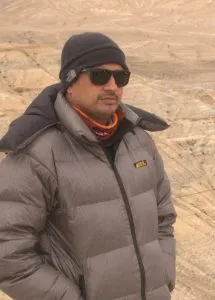
HASSLE-FREE
EXPERT LOCAL GUIDES
TRUSTED BY MANY
UNBEATABLE SUPPORT





